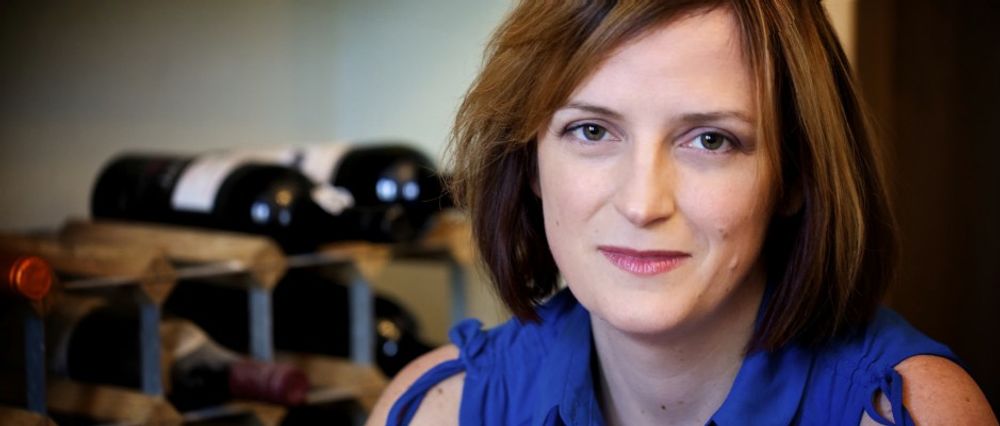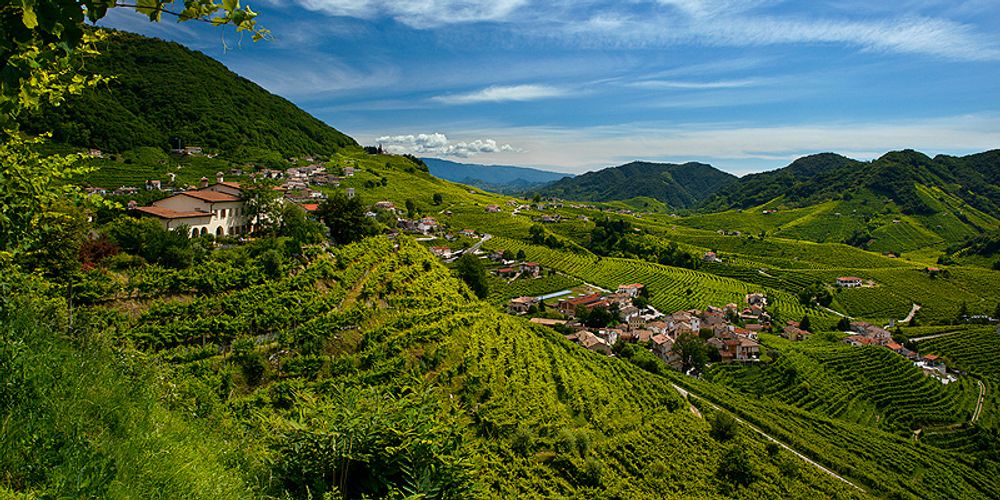A good wine list is all about challenging and interesting your customer. But sometimes, says Sarah Abbott MW, it requires the gatekeepers, the sommeliers and restaurateurs to also open up their list wines to wines they may have a prejudice against. Like Prosecco. Here, ahead of two specialist Prosecco seminars in London and Manchester in June, she makes the case for Superiore DOCG Prosecco.

Sarah Abbott MW believes there is great potential for Superiore DOCG Prosecco and urges more sommeliers to open their palates to it.
Prosecco might be the trade’s fastest seller but it also has a lot of trade critics. Why do you think that is?
The trade has mixed perceptions of Prosecco. It’s weirdly common for wine styles that have been embraced by normal humans to become diminished in the eyes of connoisseurs and professionals. Saying that you “don’t like Prosecco” is like saying that you don’t like Chardonnay, because of some excesses in style during the 1990s. That you don’t like German Riesling, because of the association with Leibfraumilch of the 1970s. That you dismiss Merlot, because of the excessively easy styles pilloried in Sideways.
Every established appellation makes top quality artisan examples and accessible, price-driven examples. I have been bemused by the dismissal of some in the trade and press. It shows a lack of respect for the consumer, and a lack of curiosity for wine. Successful Italian appellations seem much more vulnerable to this type of un-nuanced dismissal than their French counterparts. It’s not as if all Champagne is exquisite. We just need to show the best of Prosecco, and that means the best wines from the Superiore zone.
Do you think Prosecco Superiore DOCG has the potential to really help turnaround the trade’s perceptions towards Prosecco.
Most Prosecco Superiore DOCG is bottled as Conegliano Valdobbiadene DOCG. (There is a smaller, and also very interesting, DOCG in Asolo, but we are focusing on the former.) ConVal, as the Americans are calling it (wine-related Americanisms are the best Americanisms), is one of the oldest appellations in Italy. ‘Superiore’ does not designate (as with many appellations in Italy, and France) a higher alcohol, or longer ageing. It indicates a specific and distinctive place of origin, in this case covering just 8,000 hectares.
This is vertiginous terroir, close to the Alps, with extreme swings in temperature and nuanced exposures. Soils are stony and free draining. Nights are cool and the breeze constantly dancing. The wines are much more complex and refined than in the ‘standard’ DOC.
The success of DOC Prosecco has stimulated premiumisation in the older, smaller appellation. The producers of Conegliano Valdobbiadene are dynamic, site-obsessed, eco-aware, and innovative. Many are young, and have worked and studied across the world. But most Conegliano Valdobbiadene DOCG is sold in premium Horeca channels in Italy. I think the new styles coming out of Conegliano Valdobbiadene, which are haunting and mineral, would surprise and engage many. The zone rich in small and medium-sized estates making wines from their own vineyards. Many are farmed organically, or sustainably.

The beautiful landscape is where the Conegliano Valdobbiadene producers are
We have some excellent on-trade suppliers importing these wines. Thorman Hunt import Collalto, Justin Knock MW at Philgas and Swiggot imports the tiny production wines of Garbara. Alex Hunt MW at Berkmann brings in Canevel. (Alex was one of the inspirations for this tasting,, as he told me that customers don’t understand the distinction between the different Prosecco appellations, and that the DOCG need help.) H2Vin bring in the lovely wines of La Farra. Astrum import Adami. Passione Vino work with Malibran, who was in the vanguard of producers making “Colfondo” Prosecco – a sort of PetNat. Colfondo is fully dry, frizzante, and lightly cloudy because it’s fermented in bottle and the lees are left in. It is delicious, and surprising, and the darling of Italy’s top sommeliers. So Prosecco Superiore wines are being championed by some of our very best importers. They are available for the trade and press to try and share. Just open minds and open bottles. They may even encourage some to consider some of the quality-driven wines of Prosecco DOC.
Why would you look to list a Prosecco Superiore DOCG over another sparkling wine, and in particular Champagne?
All ‘other’ sparkling wines have got to get over this Champagne hang up. The sparkling wine sector has blossomed in diversity, quality, price points and consumption context. It’s no longer about Champagne on New Year’s Eve and special occasions. Sparkling wines such Conegliano Valdobbiadene DOCG, English sparkling, Cava Paraje, Franciacorta, and scores of others, exist on their own merits and personality. They don’t need to define themselves with reference to Champagne, and they certainly shouldn’t be sold as ‘Poor man’s Champagne’, or even ‘Better than Champagne’.
We are starting to see more diversity in sparkling wine on restaurant lists. Last summer’s “Fiz” pop up served a wide range of exclusively sparkling wine. There are trade shows and publications devoted to sparkling wine. These different sparklers have different souls. Good Champagne is deep, savoury and somehow introspective. Good Conegliano Valdobbiadene DOCG is stony, airy, joyous.

But as to which to list, and why. It varies according to positioning, cuisine, and customer base. There’s a distinctive and useful diversity in styles of these wines. The bone-dry single site “Rive” are intensely stony and mineral. The Italians serve them in wine glasses, not flutes, and drink them with oysters and other seafood, and carpaccio. (These wines are booming in Japan, where they are paired with sushi, and the delicate styles of sashimi.)
Cartizze are increasingly being made in a dryer styles, but actually a good classical, off-dry, Cartizze is the world’s greatest pairing with afternoon tea. And the new wave of organic, low-sulphur, “Colfondo” Prosecco sits in that PetNat category, and appeals to the same audience. (Interestingly, this latter style is seen by those who make it as a return to their roots. Before Martinotti developed, in 1895, the tanks that Charmat went on to refine, all Prosecco was made in this way.)
And there is a clear ‘trade up’ opportunity for those consumers familiar with DOC Prosecco, and who probably got into drinking wine because of it.
At the June tastings you are hosting a specialist seminar. Can you explain what you are looking to do and why?
The seminar takes 10 great examples of contemporary Prosecco Superiore from the Conegliano and Valdobbiadene subzones. Roberto Merlo and I will chair it. Roberto advises on Viticultural research and policy for the Prosecco Superiore DOCG Consorzio. I spent a day trailing after him up and down the slopes of the zone (he is a hill runner), and found that he unlocked the heart of the appellation for me. So I asked him to come over for the seminars in London and Manchester.
Growing vines on those slopes is ridiculously challenging, and the growers have evolved very particular methods of training, pruning, etc. that I have asked him to explain. Roberto is also one of the authors of the sustainable Viticultural Protocol recently developed by the Consorzio, and I think it’s important that we explore that. We look at almost every expression of Conegliano Valdobbiadene DOCG, including Colfondo, Rive, Organic, Traditional Method, and Cartizze, and we consider a range of sweetness. I have included more of the driest styles, as this is what our market is most interested in.
The wines we’ve selected and the content for the day explore four key themes of Conegliano Valdobbiadene DOCG: more dry, more specific, more sustainable and more diverse.

Sarah Abbott MW believes sommeliers should focus on four key themes when it comes to Prosecco: more dry; more sustainable; more specific; and more diverse
Are these four themes – dry, specific, sustainable and diverse – a good way for sommeliers/restaurants to look at the Prosecco Superiore category and consider which styles they are listing?
They leapt out at me, and they recurred in many conversations I had with my sommelier friends. And the diversity theme is so broad – it even extends to grape varieties. Producers such as the brilliant Umberto Marchiori are reintroducing ancient grape varieties back into their Prosecco Superiore, with compelling results.
What do you think are the wider challenges and opportunities for Prosecco Superiore DOCG going forward?
UK sales of sparkling wine have increased by 70% in the last five years, and are predicted to grow to 15 million cases by 2010. Consumption contexts for sparkling wine are broadening at every level of the market. Sparkling wines are increasingly paired with food, and are not restricted to reception and party time. Conegliano Valdobbiadene could take you right through a meal. In fact, we will probably try that next.
There’s a great opportunity for leading the category and showing innovation in telling the world about this explosion in quality and aspiration in Conegliano Valdobbiadene, and Prosecco Superiore. There are so many arresting stories and angles. Quality, relative to price, is excellent. Their natural market positioning is mid-premium, not entry-level, and that is entirely positive.
The biggest challenge is prejudice among trade buyers and commentators. The wines are ready and waiting for them.
- Sarah Abbott MW will be helping to host two events, one in London and one in Manchester, to help bring to life the Prosecco from Conegliano Valdobbiadene.
- The London event takes place on June 4 at 67 Pall Mall, SW1Y 5ES across two sessions between 10.30am to 12pm and 1.30pm and 3pm. These will be technically focused, invitation-only seminars that will focus on the four key trends emerging in Conegliano Valdobbiadene presented by Sarah Abbott MW. Register here for the morning session and then here for the afternoon session.
- The Manchester event takes place on June 5, 2.30pm to 4pm, at Lounge on 12 Manchester House, M3 3BZ. Please register using the links provided above.










































